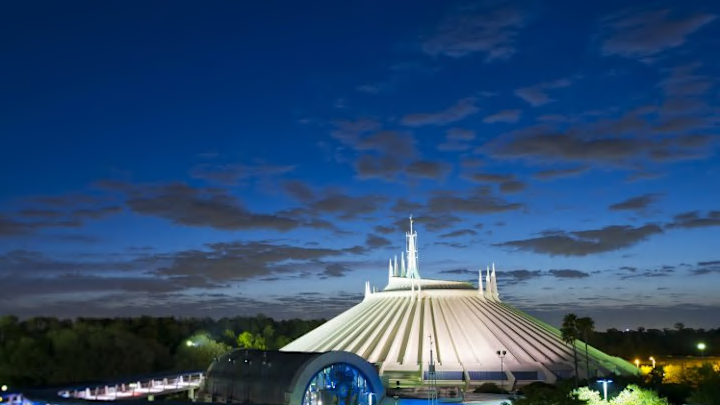Disney guests have to hear a lot of the "insider jargon" when they visit the parks. For example, employees are called "cast members," and some secret codes among workers. However, some guests may be confused about why something is called an "e-ticket attraction." What does the term mean, and where did it come from?
When Walt Disney opened Disneyland in 1955, the concept of the "theme park" hadn't taken off. The closest equivalent was the county fairs and circuses around the country. Thus, Disney decided to go off the same method of an overall entry fee for the park and then ticket booklets for the various attractions.
It was a smart business move for Disney as he knew some guests would be willing to pay more to get tickets for the top attractions. It was also great for families as they could let kids be on some rides while they sat them out without paying more.
How the booklets worked
The booklets came in a variety of tiers, working from A to E. Each attraction had a cast member at the entranceway to take the ticket, ensuring it was for the right ride. There was a chance for guests to combine two lower-ranked tickets for a bigger one or have to purchase more from a kiosk. This meant guests would have to be careful in buying the booklets and using the tickets right over the course of the day.
A: Simple attractions like the Carousel
B: Larger attractions such as Dumbo
C: More popular Fantasyland attractions such as Mr. Toad's Wild Ride, Jungle Cruise, Peter Pan etc.
D: A "mid-level" ticket for attractions such as Tom Sawyer's Island, Storybook Canal Boats, Mine Train
This led to the big one: The "E" ticket, which was introduced in 1959, when Disney opened several top attractions like the Matterhorn, Monorail, and Submarine Voyage. From then on, the E-ticket would be used for the biggest Disney rides around.
What made an E-Ticket attraction?
The E-Ticket was meant for the biggest and best rides in Disneyland (and later Walt Disney World). These were the signature attractions and often the ones breaking the mold in theme park design, from the Matterhorn to Pirates of the Caribbean. While they were more expensive than the other tickets, guests always found them worth it in order to ride these attractions. This meant the Imagineers had to craft these attractions for the booklet.
For the record, the full list of E-Ticket attractions at Disneyland were:
* Mine Train Ride
Pack Mules
Jungle River Cruise
Disneyland-Alweg Monorail Trains
Matterhorn Bobsleds
It's a Small World
Enchanted Tiki Room
Submarine Voyage
Rocket To The Moon/Mars
American Sings
Pirates of the Caribbean
Country Bear Jamboree
Haunted Mansion
Space Mountain
Big Thunder Mountain
Thus, it's easy to gauge how the E-Ticket became synomous with the hottest attractions at Disneyland.
The end of the booklets
By 1982, the concept of the ticket booklets was vanishing as guests were tired of having to pick and choose. Thus, Disney finally went ahead with the regular all-day pass for Disneyland and Walt Disney World. Interestingly, Tokyo Disneyland still used the booklets until 2001.
By that point, the idea of "E-Ticket Attraction" had entered the theme park lexicon, not just for Disney but other companies. It was shorthand for how important a ride would become and used for the biggest attractions, emulating what would have fit that ticket booklet decades ago. It's also easy to see the tickets later inspiring the Fast Pass and Genie+ systems of today.
Talk to Imagineers, and everything from Rise of the Resistance to Tron Light Cycle Run is referred to as an E-Ticket ride. It's a key part of theme park design, so while the actual tickets are long gone, the E-Ticket mentality is a reason there are so many amazing rides at Disney parks today.
